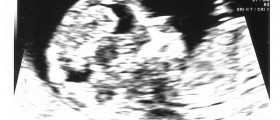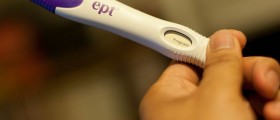
Fertilized egg ends differently and it burrows into the uterus lining. Burrowing process means that the egg has to make some space for itself and then some parts of the lining get shed. This shedding is very small, because the egg is also small and doesn’t need much space at first. There is only small portion of the tissue and blood during this time and this is what’s been called implantation bleeding.
How Implantation Bleeding Looks Like?
Blood and tissue released during implantation bleeding usually leaves light pink or dark brown spots, sometimes associated with some brown clots. The color indicates some old blood that took some time before it came out from your body.
Fertilization happens if there is some available sperm at the time the egg is released during ovulation. Once fertilized, the egg takes several days for implantation. After that, several days more are needed for shedding of the lining, so it all happens approximately a week after ovulation. Spotting usually occurs some 6 to 12 days after ovulation, because it takes a while to get out of the lining.
How Long It Lasts?
Since it takes up to 12 days to appear, it is not easy to differentiate period and spotting (as early sign of pregnancy). If the spotting increases or doesn’t change you are very likely going to have your period. If the spotting lasted one or two days and then stopped, you might be pregnant. Spotting may also be seen as a single spot on your underwear and passed unnoticed.
Spotting for several days and home pregnancy test say you’re pregnant may indicate ectopic pregnancy. So, if this happens, consult your doctor. Also, every woman is different and spotting for more than two days may also indicate pregnancy in some women. Just make sure to consult your doctor.
Does it Always Occur?
No, some women never experienced implantation bleeding. This is not something that is happening to every single woman and something that has to happen.
Also, women who already know they are pregnant may experience spotting in early pregnancy. This happens to 20 to 30% of all pregnant women and could be also related to implantation.
















Your thoughts on this
Loading...